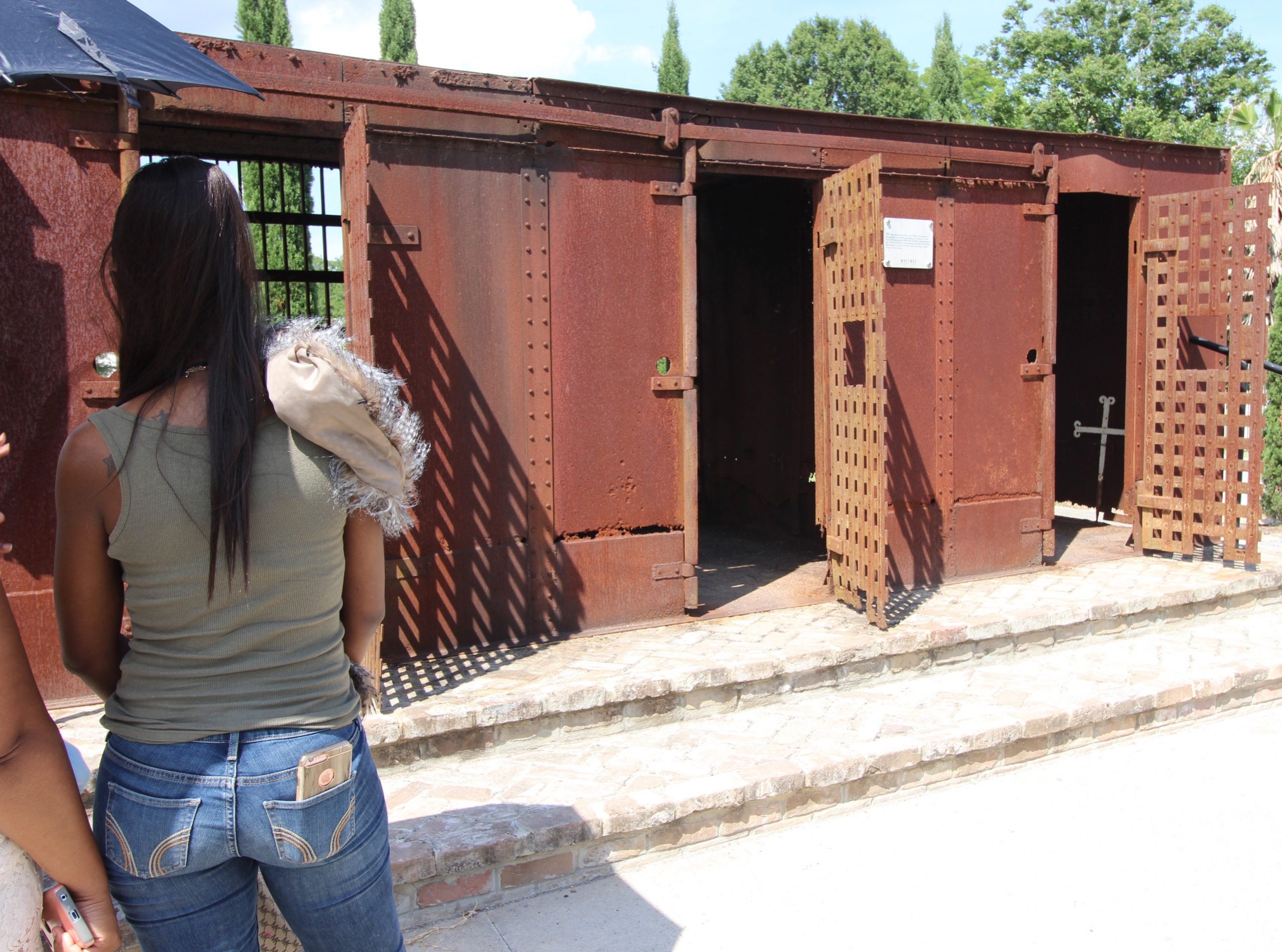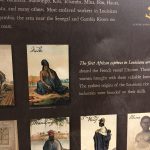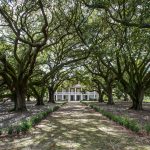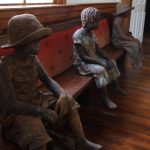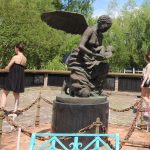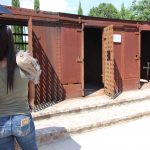“People get angry at what I’m explaining. They get frustrated and sometimes nasty – because they thought they knew the history of slavery. And this story is much deeper,” said Whitney Plantation Museum tour guide Cheryl Gaudet.
 On a recent and steamy May afternoon, people from across the US and Canada spent 2 hours listening to their tour guide at Whitney Plantation. The story was one of bloody hell. The museum is dedicated to telling the unexpurgated history of Louisiana’s enslavement of Africans and African-Americans.
On a recent and steamy May afternoon, people from across the US and Canada spent 2 hours listening to their tour guide at Whitney Plantation. The story was one of bloody hell. The museum is dedicated to telling the unexpurgated history of Louisiana’s enslavement of Africans and African-Americans.
One of the cornerstones of slavery was that wealthy men were able to take sexual pleasure from almost any black female at almost any time. Or to have their way with boys or men. But sex was one of a myriad ways in which plantation owners abused African people.
There was the misery of family separation. Fathers were routinely taken out of the family unit, for example. Daily life was a minefield. No slave could predict who would be fingered for lashing. Lack of medical care was endemic.
Such savagery had a strong justification in St John the Baptist Parish, a part of the German coast. Slaves made up 45% of the Louisiana population in 1820. Steady and strong-willed intimidation was considered essential for white survival. Rumors of incipient slave rebellions steadily spooked the European population.
 Documentation of slaves’ lives was long a neglected task. But in the 1960’s and 1970’s scholar Gwendolyn Midlo Hall (Africans in Colonial Louisiana, 1992) painstakingly combed archives in the US, the Caribbean, and Europe – both Spanish and French archives – to find the names and fates of African slaves. She worked for 15 years, five years with research assistants, to develop a searchable database on more than 100,000 slaves identified in historical records. These included Africans transported to Louisiana in the 18th and 19th centuries.
Documentation of slaves’ lives was long a neglected task. But in the 1960’s and 1970’s scholar Gwendolyn Midlo Hall (Africans in Colonial Louisiana, 1992) painstakingly combed archives in the US, the Caribbean, and Europe – both Spanish and French archives – to find the names and fates of African slaves. She worked for 15 years, five years with research assistants, to develop a searchable database on more than 100,000 slaves identified in historical records. These included Africans transported to Louisiana in the 18th and 19th centuries.
Whitney Plantation disseminates its sobering information via the very informative whitneyplantation.com, the tour guides and signage. In the church are dramatic statues that cannily mimic the size and posture of African children. The statues’ faces and bodies ring true. Their overalls and frocks hang on defeated frames. Created by American sculptor Woodrow Nash, they represent the innocent witnesses to the adult carnage. Many of these children were victims – via starvation and other abuses – of their owners’ neglect.
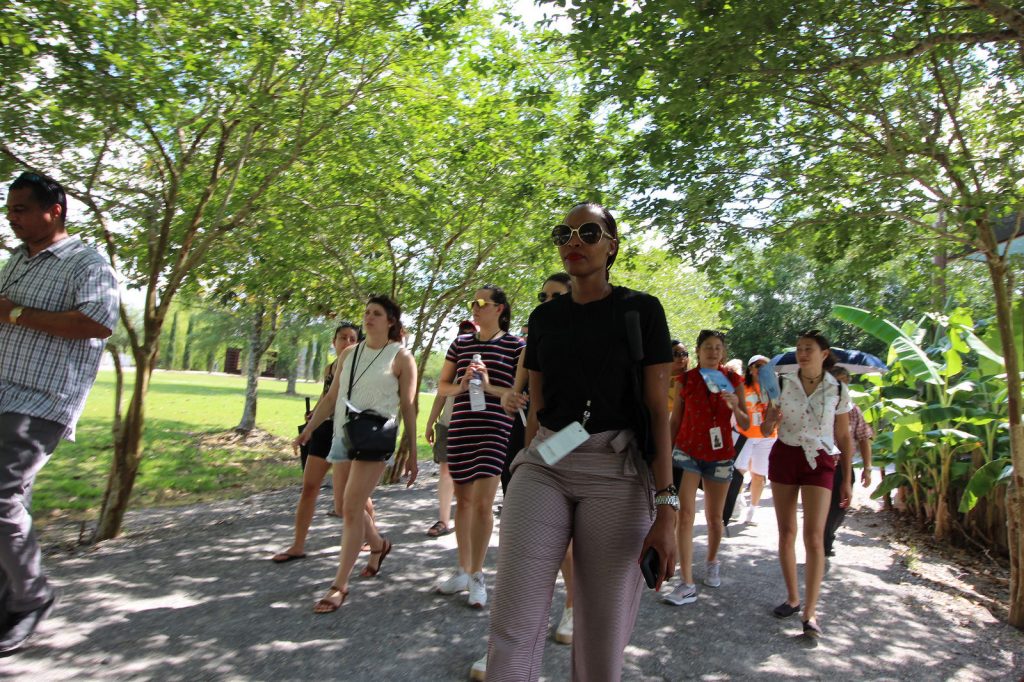 The grounds of the plantation are verdant and shaded by live oaks and palms. Giant iron sugar-boiling pots – graceful and picturesque – have been collected in rows. The big house is a graceful, two-story structure of modest size. The furnishings denote a life of luxury and comfort but are not extravagant. The outbuildings such as the kitchen and the slave quarters seem innocent.
The grounds of the plantation are verdant and shaded by live oaks and palms. Giant iron sugar-boiling pots – graceful and picturesque – have been collected in rows. The big house is a graceful, two-story structure of modest size. The furnishings denote a life of luxury and comfort but are not extravagant. The outbuildings such as the kitchen and the slave quarters seem innocent.
Without a guide to reveal the details of slave life a visitor might be seduced by the romance of life on the fertile banks of the Mississippi River.
Visiting the Whitney Plantation requires a trek into rural, historic bayou country. Preserved plantation houses and historic structures are commonplace along the river road. Even when it is sultry, the geography is exotic and colorful. Because the beauty is mixed with truth – one sees the evil of men for whom human chattel was essential – a visit to this off-the-beaten-path part of Louisiana is highly recommended.
Whitney is located some 40 miles west of New Orleans. There are exit signs on I-10 (Gramercy exit 194) that will lead you to the site.
Admission, $22, ages 6 – 12, $10; seniors, students, $17.

